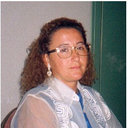Steroidal glycosides with antiproliferative activities from Digitalis trojana.
Raktažodžiai
Santrauka
The phytochemical investigation of Digitalis trojana led to the isolation of two cardiac glycosides (1, 2), one pregnane glycoside (3), three furostanol type saponins (4-6), along with three cleroindicins (7-9), four phenylethanoid glycosides (10-13), two flavonoids (14, 15) and two phenolic acid derivatives (16, 17). The structure elucidation of the isolates was carried out by NMR experiments as well as ESI-MS. The cytotoxic activity of compounds 1-13 against a small panel of cancer cell lines, namely MCF-7, T98G, HT-29, PC-3, A375 and SH-SY5Y, was investigated. Compounds 1-6 showed antiproliferative activity against human breast MCF-7 and colon HT-29 cancer cell lines with IC50 values ranging from 8.3 to 50 μM. In order to understand the mechanism involved in the cell death, the active compounds were tested as pro-apoptotic agents using propidium iodide staining by flow cytometry method. No significant increase was observed in the apoptosis of the MCF-7 and HT-29 cancer cells. Moreover, the effects of the active compounds on cell proliferation were assessed on the same cancer cell lines by cell cycle analysis of DNA content using flow cytometry. No significative changes were observed in the cell cycle of MCF-7, while significant changes in G2 /M cell cycle phase of HT-29 cells were observed after treatment with digitalin (1), cariensoside (3) and 22-O-methylparvispinoside B (6) at 10 μM.



